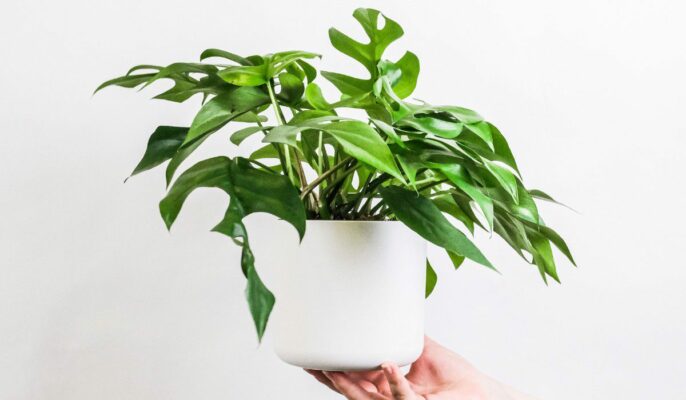This special houseplant is unique in several ways, just like its name. The Swiss Cheese Plant that goes by the botanical name, Monstera Adansonii, is a unique variety of the Araceae family.
Its pointy leaves with holes in the middle have earned it the titular, Five Holes Plant. A climber, the Swiss Cheese Vine is easy to grow and care for and, thus, quite a favourite among beginners as well as established gardeners.
See also: What are the types of money plants?
know all about White Fly
These flowering jungle plants are perfect for indoors because of their size and versatility. The evergreen, climbing, epiphytic plant is both showy and useful for its medicinal properties.
In native conditions, the plant bears whitish-coloured, spathe-type flowers with a spadix in the centre. Indoors, they rarely flower.
Swiss cheese plant: Quick facts
| Botanical name: Monstera Adansonii
Common names: Swiss Cheese Plant, Swiss Cheese Vine, Five Holes Plant Native: Central America, South America Family: Araceae Type: Perennial Sun: Partial exposure Soil: Well-drained, acidic, moist Bloom time: Spring Toxicity: Pets |
Read also: Pothos Plant: Know how to grow and care
Growing and caring tips
Propagation
You can propagate the plant from stem cuttings and seeds. Go for the former option for an easy approach.
Soil
Since the plant prefers well-drained, moist, acidic soil, a peat-based potting mix is ideal. Growth would be fast if the pH of the soil ranges between 5.5-7.
Sunlight
The plant loves indirect sunlight since in its native place it grows under the shadow of tall trees. Too much sunlight will be detrimental to the foliage, resulting in burns. For indoor plants, a maximum of 3 hours of indirect sun exposure in a day is more than enough. Too much direct sunlight would make the leaves go black.
Watering
Water your plant only when the soil dries up to an inch. Overwatering would make the leaves yellow.
Humidity and temperature
This tropical vine does well in high humidity and warm temperature. While 65-80 degrees would be an ideal temperature, bespoke humidity would be anything above 50%.
Fertilisation
An all-purpose liquid fertiliser must be fed monthly. However, deploy this frequency only after 6 months of potting the plant.
Pests and infestation
This one is quite prone to pest infestation. From mealybugs to spider mites and scale to whitefly, all are attracted to the Swiss Cheese Vine. However, these infestations are not deadly. Use neem oil to get rid of any infestation.
Toxicity
The Swiss Cheese Plant contains calcium oxalate crystals, a toxic substance that can cause swelling and inflammation in the mouth, tongue and throat. This component gets destroyed if the leaves are thoroughly cooked and completely dried. People suffering from rheumatism, arthritis, gout, kidney stones and hyperacidity are advised to keep off the plant.
Plant perfection
Cheesy foliage charm
Swiss cheese chic
Unique hole-filled leaves
Cheese-inspired greenery
FAQs
Is the Swiss Cheese plant rare?
No, Monstera Adansonii or the Swiss Cheese plant is quite common.
Is the Swiss Cheese plant easy to maintain?
The caring procedure for the Swiss Cheese Plants is quite similar to any other tropical house plant.
